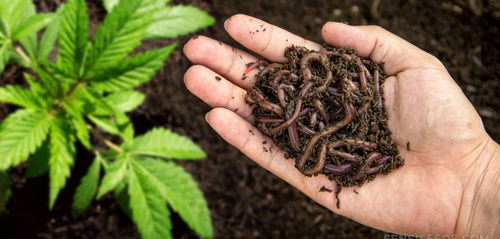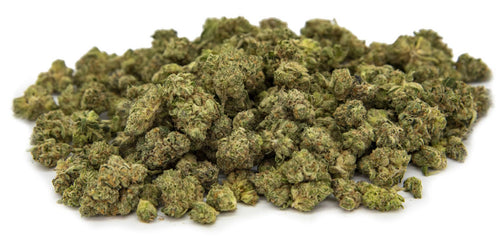#37: Exploring the Origins: A Journey into the World of Landrace Strains
#37: Exploring the Origins: A Journey into the World of Landrace Strains
The history of cannabis is as old and diverse as the civilizations that have cultivated it. This versatile plant, used for its fibres, seeds, and psychoactive properties, has travelled across continents, influencing cultures and economies along the way.
But the real roots of cannabis, the strains that gave birth to the myriad of varieties we see today, lie in what are known as 'landrace' strains. These are the original, naturally occurring strains of cannabis that evolved over thousands of years in specific geographic regions. Landrace strains are the ancestors of the more modern varieties we know today.
For many years, these landrace strains have been cultivated and studied by breeders in search of superior genetics to create new hybrid varieties. These hybrids often combine multiple landrace traits, offering growers a wide range of options when it comes to creating their own unique strains. While many of the original landrace strains have been lost to time and the changing world, there are still a few that remain, providing valuable insight into the genetic history of cannabis.
Landrace strains are more than just a source of genetic information — they are a link to the history and culture of cannabis. As we continue to explore the world of modern cannabis breeding, it's important to remember the original landrace varieties that made it all possible. By understanding their origins and influence on today's industry, we can pay homage to the rich heritage of this remarkable plant.
In this article, we'll explore the history of landrace strains, their importance to the modern cannabis industry, and how breeders are using them to create new hybrid strains. We'll also look at some of the most popular landrace varieties, from classic Afghani to the tropical Thai strain. So let's dive in and take a look at the fascinating world of landrace strains!
Landrace strains: The ancient DNA shaping modern cannabis
Landrace strains refer to cannabis plants that have developed naturally in a specific geographical region over thousands of years, adapting to the unique environmental conditions of their native habitats. They are essentially the purebred, wild ancestors of the cannabis varieties we are familiar with today.

These strains exhibit unique characteristics that make them distinct from each other. The variations can be noted in their size, shape, colour, growth pattern, resilience to local pests and diseases, and even the type and amount of cannabinoids they produce. These traits reflect the plant's adaptation to its environment, leading to a genetic makeup that's as unique as the region it originates from.
While landrace strains are indigenous to certain regions and have evolved naturally over time, they are not necessarily the same as wild cannabis. Wild cannabis often refers to the feral plants found growing in remote areas, and these usually contain an inconsistent array of genetic traits. Landrace strains, on the other hand, have been purposely cultivated by indigenous populations, resulting in a more consistent set of characteristics. This consistency makes them invaluable resources for breeders looking to create new hybrid varieties with specific traits.
On the other hand, hybrid strains are the result of intentional cross-breeding between two or more different strains of cannabis. Breeders create hybrids to combine desirable traits from multiple strains into one - this could be anything from disease resistance to flavour profiles or even the psychoactive effects. Unlike landrace strains, hybrids are man-made and do not occur naturally.
Understanding these differences is crucial for any cannabis enthusiast, as it provides insight into the plant's genetic history, its unique traits, and the diverse range of experiences it can offer.
Where it all began: Unveiling the ancestry of landrace strains
The history of landrace strains is intertwined with the history of human civilization itself. When humans migrated and established settlements, they carried cannabis seeds with them. Over centuries, these seeds evolved and adapted to their new environments, eventually developing into distinct landrace strains. They are the original chapters in the cannabis story, their evolution mirroring our own journey as a species.
Landrace strains are typically named after their place of origin, providing a geographical snapshot of their roots. For instance, 'Afghani' traces its lineage back to the mountainous regions of Afghanistan, while 'Durban Poison' hails from the port city of Durban in South Africa. Each of these strains embodies the unique environmental conditions of their native habitats, making them a living testament to nature's diverse creativity.
In many regions, landrace strains have significant cultural importance. They have been used for medicinal purposes, in religious rituals, and as a part of daily life. In Jamaica, for instance, Lamb's Bread has been intertwined with Rastafarian culture. In India, strains like 'Indian Landrace' have been used in the preparation of 'bhang', a traditional beverage consumed during festivals like Holi. These strains are not just plants; they are a part of a people's heritage and way of life, reflecting the deep bond between humans and this remarkable plant.
The journey of landrace strains: From origin to cultivation
The migration of landrace strains over centuries has been a remarkable journey, marking the passage of time and the evolution of cannabis. As ancient civilizations interacted, they exchanged not only goods but also cannabis seeds. These seeds were carried along trade routes, exchanged between cultures, and spread to new regions. As they moved from place to place, they adapted to different environmental conditions and eventually evolved into distinct landrace strains.

Every landrace strain is a product of its environment. Climate, soil composition, altitude, sunlight exposure - all these factors have played a significant role in shaping the characteristics of different landrace strains. For instance, strains native to mountainous regions like Hindu Kush in Afghanistan have developed a robust, compact structure to withstand harsh weather conditions, while strains from tropical regions like Thailand are tall and slender, optimized for heat and humidity.
Human intervention has been pivotal in the cultivation and distribution of landrace strains. Early farmers selected plants with desirable traits and continued to cultivate them, shaping the evolution of these strains over generations. In modern times, breeders have collected seeds from these landrace strains and grown them in controlled environments, creating a myriad of hybrid strains that we see today.
Despite the diversity of cannabis available now, there's a growing interest in preserving these original landrace strains. They're not just a piece of cannabis history but also a genetic reservoir, holding potential for future breeding and research. As such, their preservation is crucial for the sustainability and diversity of cannabis genetics.
Tradition meets innovation: Landrace strains and modern cannabis breeding
Landrace strains have undeniably shaped the landscape of modern cannabis genetics. As the original, purebred varieties of cannabis, they are the genetic foundation upon which all other strains have been built. Each landrace strain carries unique genetic traits that have been honed by nature over thousands of years, offering a wealth of diversity that has been tapped into by breeders.
Modern hybrid cannabis strains owe their existence to the rich genetic tapestry of landrace strains. Breeders use these original strains as a genetic library, cross-breeding them to create new hybrids with desired characteristics. For instance, the famous 'Skunk #1' hybrid was developed by combining genetics from the landrace strains Acapulco Gold, Colombian Gold, and Afghani. In turn, Skunk #1 has been used to create many of the hybrids we see today, making its landrace ancestors an integral part of modern cannabis genetics.
By crossing different landrace strains, breeders can create hybrids that combine the best traits of each parent plant, be it the robust growth of an Afghani, the uplifting high of a Thai, or the sweet aroma of an Acapulco Gold. In this way, landrace strains continue to play a vital role in the evolution of cannabis, shaping the future of this versatile plant.
Living history: A spotlight on the most notable landrace strains
Let's embark on a global tour of some of the most notable landrace strains, exploring their unique traits, effects, flavours, and potential therapeutic benefits:
Afghani
This strain hails from the rugged mountains of Afghanistan. It's well-known for its stout structure and resinous buds, a testament to its adaptation to harsh climates. Afghani often has a high THC content and delivers a deep sense of relaxation. Its earthy and sweet flavour profile, with hints of pine, is beloved by many. The profound body relaxation and heavy stone make this strain a great choice for pain relief.
Popular Afghani hybrids:
Hippie Headbanger (Sour Diesel x Biker Kush)
Blue Cheese (Blueberry x UK Cheese)
Blueberry Lemonade (Blueberry Yum Yum x Lemon Loaf)
Acapulco Gold
A Mexican landrace, Acapulco Gold is a sativa-dominant hybrid renowned for its glittering golden buds and sweet, earthy flavour. It has a high-THC content and delivers an uplifting mental experience perfect for creative pursuits. The deep relaxation it provides can be helpful in treating pain and anxiety.
Popular Acapulco Gold hybrids:
Gold Francs ((Strawberry Cough x Northern Lights #5) x Acapulco Gold Alaska)
Kona Cookie 2.0 (Tropicana Cookies x Kona Cookie OG)
Thors Hammer (Vortex x Acapulco Gold x Cinderella 99)
Durban Poison

This strain derives its name from the port city of Durban in South Africa and is renowned for its uplifting high and sweet scent. As a pure sativa strain, it has an energizing effect that can help reduce stress and fatigue. Its flavour profile is reminiscent of licorice and aniseed, with hints of spice and earthy tones. It's also known to have high levels of THCV, giving it a distinctive buzz.
Popular Durban Poison hybrids:
Mint Cookies (Durban Poison x OG Kush)
Gold Butter MAC (Peanut Butter Breath x MAC-1)
Hot Tea (Bad Breath x GMO)
Panama Red
With origins in the tropical rainforests of Panama, this landrace strain is a classic sativa. It has long, slender buds and can take longer to mature than other varieties. Panama Red delivers an energetic experience with its high-THC content, potentially beneficial for sparking creativity or combatting stress. Its aroma is sweet and earthy, with notes of citrus.
Popular Panama Red hybrids:
Panama Blue (Panama Red x Crunchberries)
Congolese Red (Panama Red x Black Congolese)
Mascarpone (Cheese x (Panama / Deep Chunk))
Thai

Thai strains, native to the tropical climate of Thailand, are recognized for their potent cerebral effects. They exhibit a tall, lanky growth pattern and have a lengthy flowering period. The strong, stimulating effects of Thai strains can foster creativity and happiness, making them potentially beneficial for those battling mood disorders. Their citrusy, tropical flavour is a refreshing delight.
Popular Thai hybrids:
Grapefruit (C-99 x Sweet Pink Grapefruit)
Strawberry Falcon (Strawberries and Cream x Falcon 9)
Animal Face (Faceoff OG x Animal Mints)
Hindu Kush
This strain originates from the rugged mountains of Afghanistan and Pakistan. It's well-known for its hardy nature and robust structure, with dense buds that are covered in resinous crystals. Hindu Kush is a pure indica that can induce a calming body buzz, potentially beneficial for promoting focus or reducing stress. Its flavour profile is earthy, boasting notes of musk and pine.
Popular Hindu Kush hybrids:
Bazookas (Bubblegum Biscotti x Grape Gasoline)
Wedding Cake (Triangle Kush x Animal Mints)
Death Punch (Death Bubba x Purple Punch)
Colombian Gold
Renowned for its distinct golden colour, Colombian Gold is a classic landrace strain native to the Santa Marta mountains in Colombia. This sativa hybrid offers balanced effects and an uplifting experience that's perfect for creative activities. Colombian Gold has a sweet and earthy aroma, with hints of citrus and spices.
Popular Colombian Gold hybrids:
Mendoz Stomper (Mendo Purps x OZ Stomper)
Strawberry Guava (Strawberry Banana x (Mango #33 x Afghani #1)
Slurricane (Dosidos x Purple Punch)
Africa Sativa
One of the oldest landrace strains, Africa Sativa is native to the savannas of Africa. It's renowned for its tall, lanky growth and lengthy flowering period. This strain has a high-THC content and delivers an energizing experience that can help reduce stress and fatigue. Its flavour profile is earthy, with hints of sweet citrus and spices.
Popular Africa Sativa hybrids:
Baklava (Wedding Cake x Gelato)
Fizbo (Grape Gasoline x Fiddle Faddle)
Mo Meat (Meat Breath x Meat Breath)
Lamb's Bread

This beloved Jamaican strain is celebrated for its cerebral, energizing effects. It's a pure sativa with a tall and lanky structure and has a slightly longer flowering period than other landrace strains. Lamb's Bread delivers an upbeat experience that could be beneficial for tackling fatigue or stress. Its flavour profile offers hints of sweet citrus with a skunky undertone.
Popular Lamb's Bread hybrids:
Citrique (Lime Skunk x Orange Valley OG)
Blueberry Yum Yum (DJ Short's Blueberry F4 x Blueberry Syrup F1)
Cream N Tina (Cookies and Cream x Tina)
Mexico Ruderalis
Native to Mexico, this strain is a wild landrace that's known for its hardy structure and dense buds. It has a short flowering period and can be grown in colder climates. Mexico Ruderalis typically has a moderate THC content and delivers an uplifting, energetic experience. Its aroma is sweet and earthy, with notes of citrus.
Popular Mexico Ruderalis hybrids:
Black Shruntz Auto ((Sherbert x God Runtz) x Black Haze)
Super Green Crack (Super Silver Haze / Green Crack / Lowryder 2)
Strawberry Jam (Jamaican x Bubble Berry x Mexico - Ruderalis)
Cultivating legacy: Securing the future of landrace genetics

In the rapidly evolving world of cannabis, landrace strains are both treasured and threatened. On one hand, they're revered as the genetic bedrock of all modern cannabis varieties. On the other hand, they're at risk of genetic dilution due to the proliferation of hybrid strains.
One of the most pressing issues today is the loss of these pure strains in their native habitats. As globalization and commercial cultivation expand, landrace strains are increasingly crossbred with other varieties, compromising the purity of their genetic lineage. This trend poses a significant challenge for preserving the genetic diversity and unique traits of these original cannabis strains.
Recognizing the value and vulnerability of landrace strains, conservation efforts are underway to protect them in their native habitats. This includes the creation of landrace germplasm banks and the implementation of sustainable, eco-friendly cultivation practices. By preserving these unique varieties, we ensure that they remain a part of our global cannabis heritage for generations to come.
Preserving landrace genetics for future generations
Landrace strains represent the roots of the cannabis family tree, holding immense historical, cultural, and genetic significance. They offer a rich tapestry of experiences with their diverse effects and flavours, and they hold potential medicinal benefits that continue to intrigue scientists and medical practitioners alike.
As the cannabis industry grows and evolves, the role of landrace strains remains pivotal. They provide the genetic foundation for new strains, contribute to the diversity of the cannabis gene pool, and offer unique characteristics shaped by their specific geographic origins.
The preservation and appreciation of these strains is not just about safeguarding the past; it's also about ensuring a diverse, vibrant future for the cannabis industry. As we move forward, let us remember the importance of these original landrace strains and their place in cannabis history.
Back to all posts











